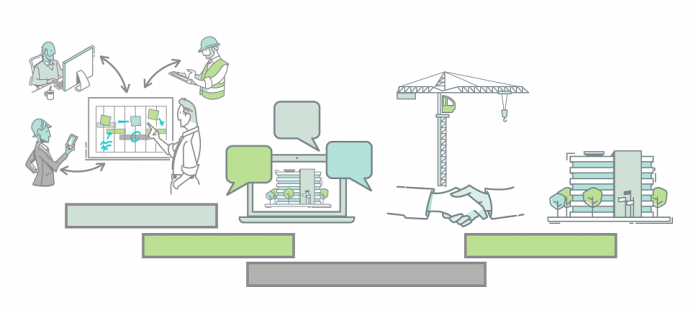Paul Daynes, Regional Director, UK and Northern Europe, Newforma discusses why BIM is so important and the obstacles that stand in the way of adopting it
For a while now, the architecture, engineering and construction (AEC) sector’s digital journey has been well under way; most significantly, the move towards BIM.
The BIM mandate is only the first step in the government’s Construction 2025 strategy; the eventual aim is to lower costs, make delivery more efficient and, above all, ensure the UK’s position at the forefront of international construction: a critical factor to achieving these is more effective collaboration.
How BIM shores up collaboration
In recent years, large public projects such as the Edinburgh Trams and the London Olympic Stadium have missed deadlines and outspent budgets. In fact, the public no longer seems surprised when the announcement of an exciting project is followed by the announcement of its delay.
It’s no coincidence these are large projects — more stakeholders means a greater chance of missed messages or small mistakes that can throw the whole project off-course. Often, missed deadlines and outspent budgets are blamed on large-scale problems such as a late-stage disagreement between stakeholders or a delay in the supply chain. However, if these issues are analysed, we find that their origins could be as simple as a missed message or a mistaken measurement.
BIM naturally drives increased collaboration by bringing all project stakeholders together at the start of a project – client, consultants, contractors, subcontractors, suppliers – allowing input from each specialist to be factored into all decisions that concern them. In such a way, the project is built digitally before ground is broken in real life. Thus, any changes to a particular project can be made in line with the interests of all stakeholders. This is why BIM will be the key to moving the industry forward.
Deeply rooted obstacles to BIM adoption
Despite the broad understanding that BIM adoption would improve collaboration and ensure the maintenance of budgets, there is still some way to go before the benefits of BIM are fully recognised. Research recently conducted by Newforma revealed that businesses are still hesitant to move away from the “pen and paper” approach. Most respondents (85%) experienced challenges when implementing digital tools; the most common challenge (44%) being the lack of existing digital skills within the workforce.
Many have said that the industry skills gap asks for more investment in education and training. However, businesses must follow up on the consequent responsibility to ensure they have the IT systems and digital tools in place to enable employees to work efficiently and intelligently across projects.
Adopt efficient digital strategies or risk losing business
Firms simply cannot afford to waste any more time because, as research reveals, the ongoing lack of collaboration is harming projects and client retention. As a result, employers need to make sure that they have project information management tools which serve to boost communication efficiency, rather than hamper it. A system which integrates seamlessly across all existing systems can simplify the information discovery process, and in turn, ensure cross-stakeholder collaboration.
Paul Daynes
Regional Director, UK and Northern Europe
Newforma














